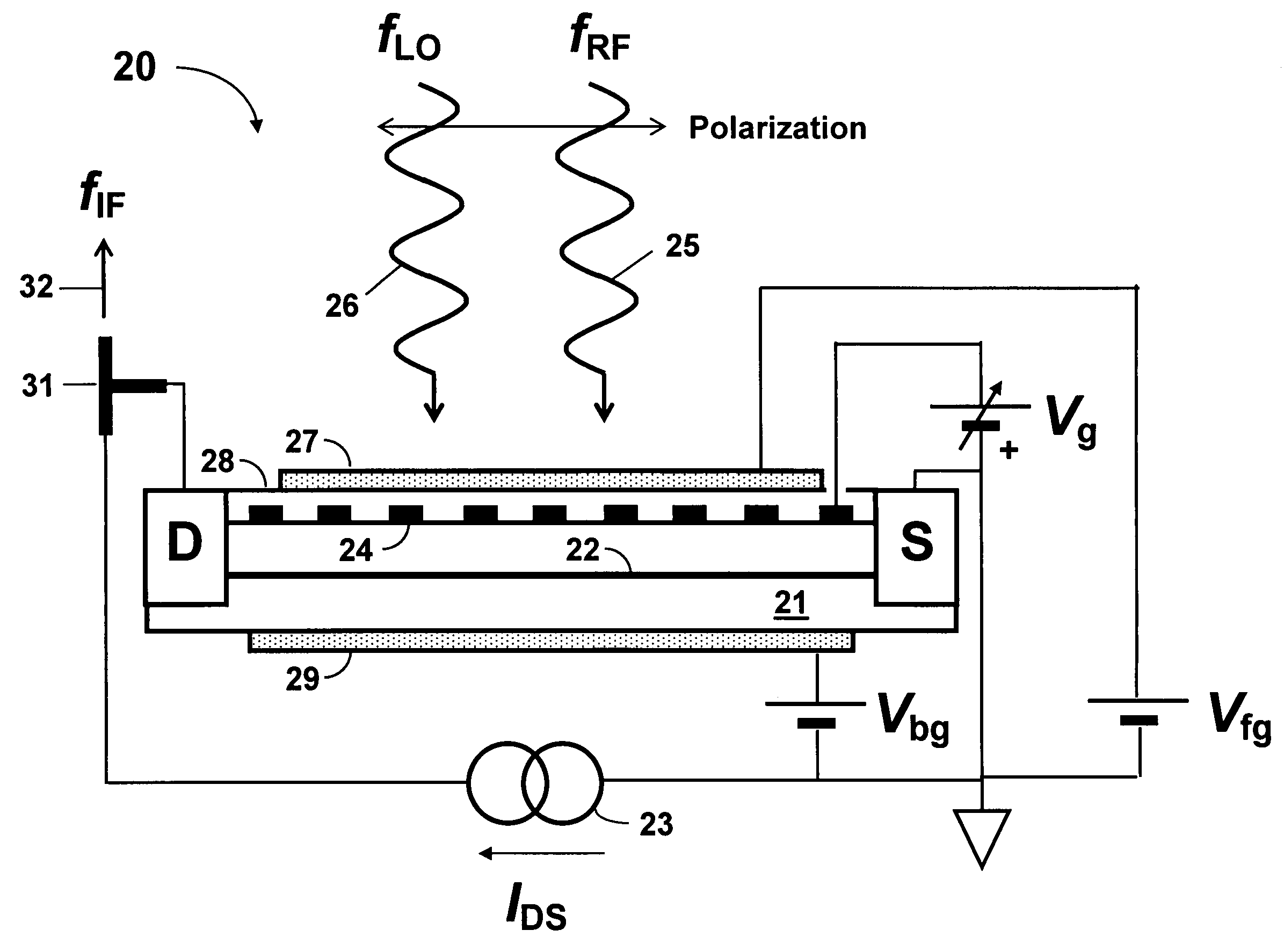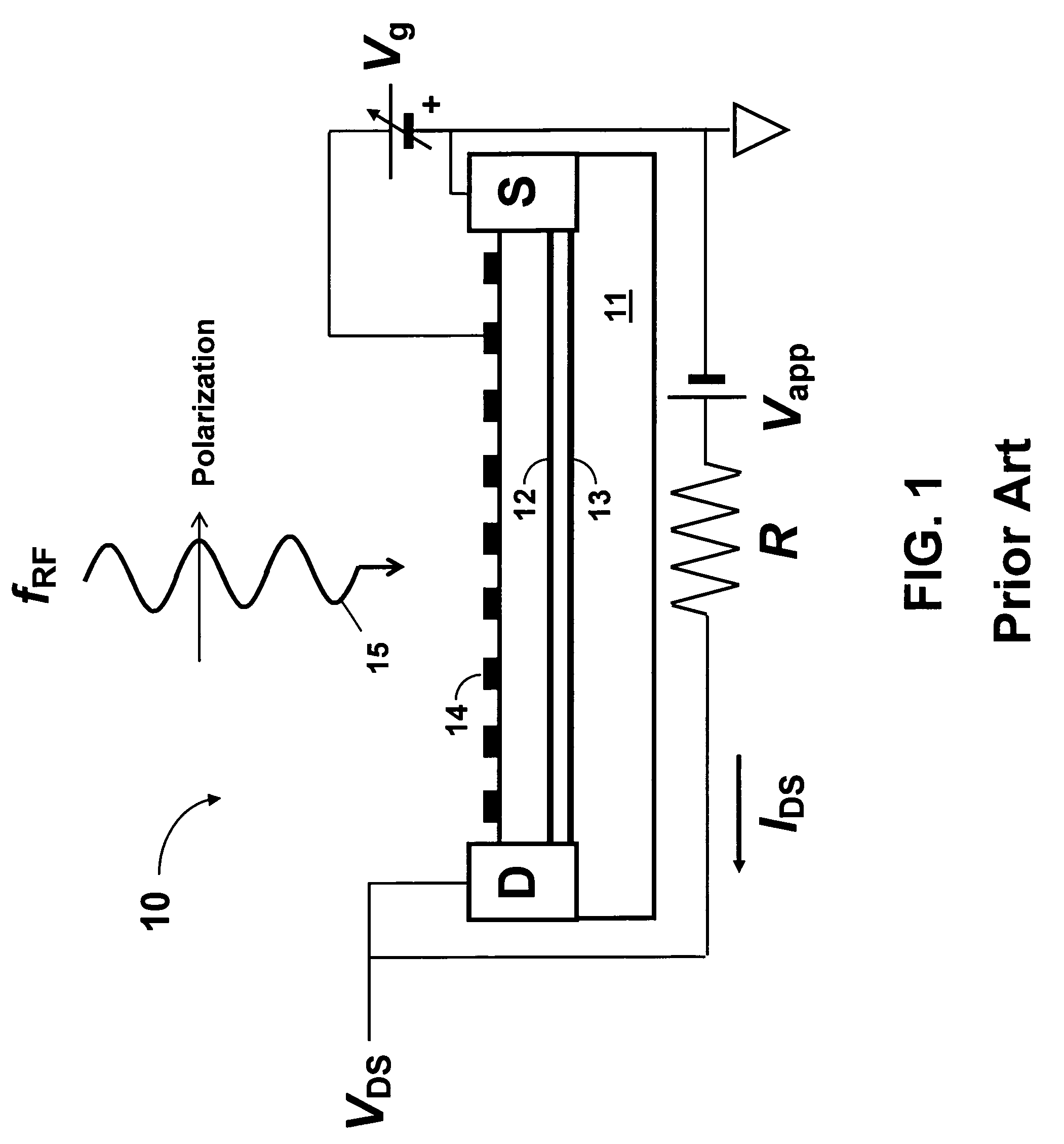Terahertz radiation mixer
a technology of terahertz radiation and mixer, which is applied in the direction of demodulation, electrical equipment, and semiconductor devices, can solve the problems of hampered terahertz applications, terahertz technology development has been discouraged, and the terahertz region is relatively undeveloped, so as to improve the performance of grating-gated mixers and reduce or eliminate channel-gate voltage variations. , the effect of reducing the variation of channel-gate voltag
- Summary
- Abstract
- Description
- Claims
- Application Information
AI Technical Summary
Benefits of technology
Problems solved by technology
Method used
Image
Examples
Embodiment Construction
[0035]In FIG. 3 is shown a schematic side view illustration of a terahertz radiation mixer 20 of the present invention. The mixer 20 can be used as a frequency mixer of electromagnetic radiation in the millimeter to submillimeter wavelength frequency range, e.g., 100 GHz to a few THz. The mixer 20 comprises a heterodyned FET having a high electron mobility heterostructure 22 that provides a gatable 2DEG in the channel region between the source S and the drain D of the FET. The heterostructure 22 comprises dissimilar compound semiconductors, such as III-V or II-VI compound semiconductors, or Ge—Si alloys, formed in a semiconductor substrate 21. Preferably, the heterostructure 22 comprises one, or -more than one closely spaced high electron mobility QW layers. The high electron mobility QW can be a thin layer of a high purity compound semiconductor that is modulation doped by surrounding, wider band gap doped barriers. For example, the QW can be an undoped GaAs layer sandwiched betwee...
PUM
 Login to View More
Login to View More Abstract
Description
Claims
Application Information
 Login to View More
Login to View More - R&D
- Intellectual Property
- Life Sciences
- Materials
- Tech Scout
- Unparalleled Data Quality
- Higher Quality Content
- 60% Fewer Hallucinations
Browse by: Latest US Patents, China's latest patents, Technical Efficacy Thesaurus, Application Domain, Technology Topic, Popular Technical Reports.
© 2025 PatSnap. All rights reserved.Legal|Privacy policy|Modern Slavery Act Transparency Statement|Sitemap|About US| Contact US: help@patsnap.com



